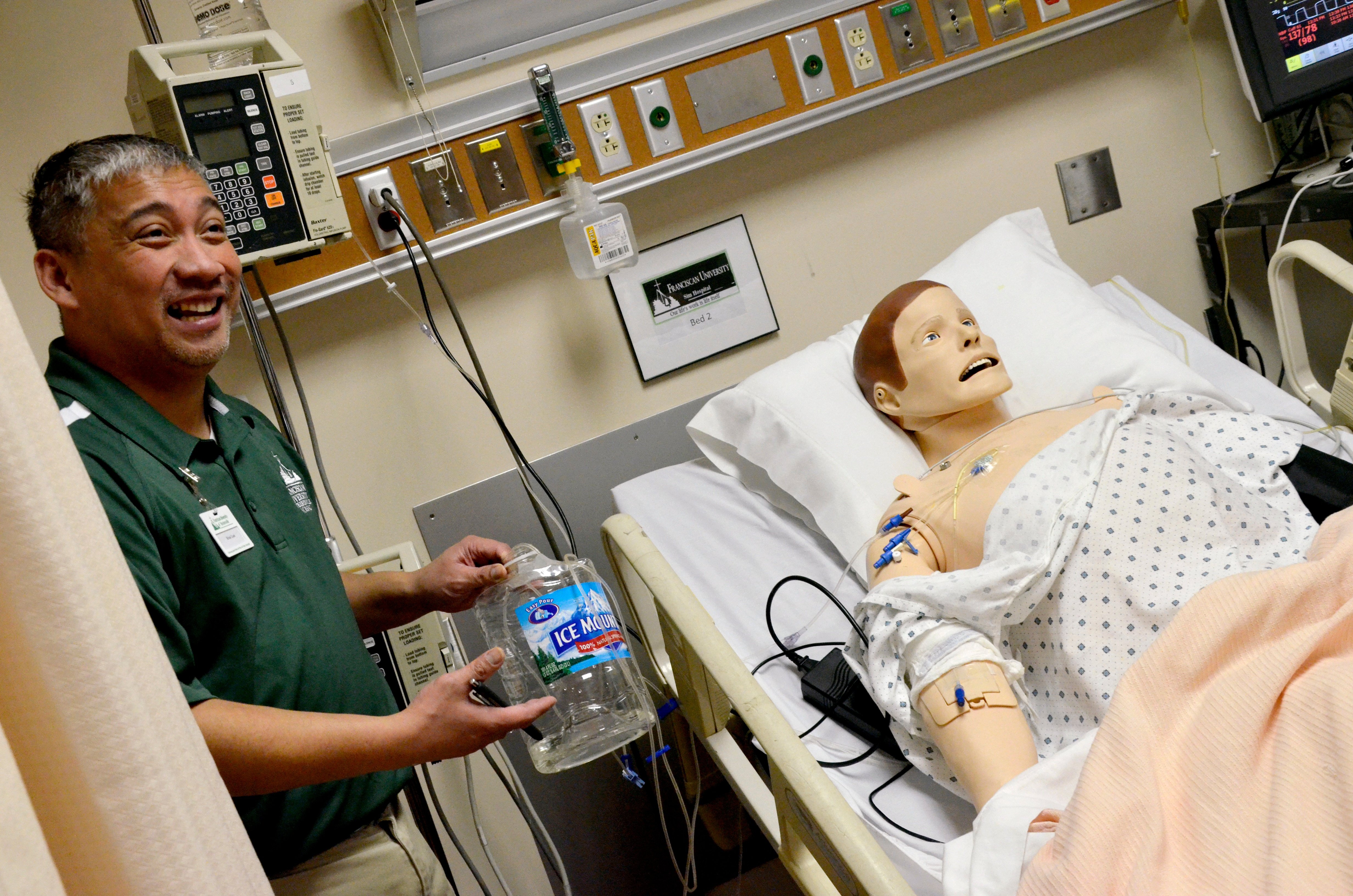
As we have seen, setting up and maintaining a simulation program comes with a steep price tag. However, most schools with nursing, pharmacy, and allied healthcare programs are coming to realize that medical simulation is the way that students best learn, and future patients are best protected.
Franciscan University faculty in the nursing department have put much thought and planning into their simulation lab, and have dealt with many financial challenges regarding the creation of simulation scenarios. They have some tips about running simulation on a shoestring budget.
1. Communications
In this faculty’s experience, student learners performed better when faculty were not in the room. The lack of real-time feedback – that is, reacting to the faculty member’s reactions as they go through a simulation – helps students make independent decisions. However, without an intense and expensive audio-visual infrastructure, the faculty faced the challenge of being able to view the simulation in order to debrief afterwards.
They solved the problem by viewing classroom simulations via Skype. By setting up a laptop with a web camera in the sim lab, and dialing in, Skype provided audio and visual capabilities without extensive rewiring or the need to build a separate viewing room.
2. Non-permanent modifications to high-fidelity simulation manikins
Aside from audio-visual equipment, high-fidelity manikins are the most expensive durable equipment in which a simulation lab needs to invest. As a consequence, faculty will seek to protect these manikins from damage.
The simulation lab at Franciscan University is set up like a hospital room. They have four manikins, three adult-sized manikins, and one pediatric manikin (meant to simulate an 8-year-old child); one of the adult manikins is a high-fidelity simulator.
The manikins are used in such a way that accurate diagnostic procedures can be performed without risking damage to the simulators. For example, one of the simulators can be used to practice catheterization; but in order to prevent leakage, a urine bag is positioned under the bed instead of inside the manikin. When the instructor sees that the catheter is correctly positioned, the bag in unclamped so simulated urine can flow into a measuring device.
Likewise, when students need to practice drawing blood work for labs, instead of using the manikin’s arms, they use an IV trainer arm. These trainers are less expensive, more durable, and provide the same fidelity to simulation.
For trauma education, one of the manikins has interchangeable parts to simulate specific injuries, such as abdominal puncture or a broken leg. The replaceable abdominal cavity can likewise be used in surgical follow up simulations. Maximizing interchangeable features on one simulator is a way to also maximize budget dollars.
3. Organizational Strategies
Instead of a hospital bed for the pediatric manikin, faculty at Franciscan University asked the Facilities Department to build them a cart so that they could make the manikin more portable for storage and instruction. In addition to a platform that acts as a bed for the simulator, the cart has storage underneath it for simulated pediatric medications, syringes, and medical equipment to use in pediatric simulation.
Another feature of the sim lab is stocking shelves that are similar to that of real clinical facilities. By designing and stocking linen carts, an IVF cart, and a med room (for example), the clinical facilities are perceived to be more realistic and user-friendly.
Finally, much of the equipment in a simulation lab can come from reusable items, from syringes and IV flush tubing, to medicine bottles (that are cleaned and refilled with sterilized water) and linens.

Franciscan University Nursing Faculty:
- Richard Antinone, RN, MSN, CEN
- Kim Donnelly, RN, BSN
- Natalie Linn, RN, MSN
- Brian Loot, MSN, RN
- Catherine Recznik, RN, MSN, CEN, CPEN
Running Sim on a Shoestring: Innovations in simulation with a limited budget was a demonstration of technology and practical innovations. They presented at the February 24, 2018 gathering of SimPOW (attendees and faculty pictured above), the Simulation Alliance of Pennsylvania, Ohio, and West Virginia. For more information about SimPOW, see the site.






